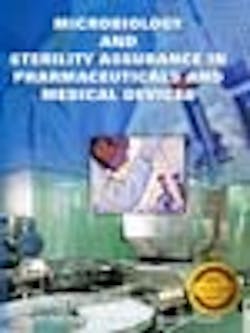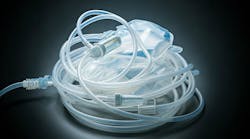Editor’s Note: The following excerpt is republished from: Saghee, M.R., Sandle, T. and Tidswell, E.C. (Eds.) (2010): Microbiology and Sterility Assurance in Pharmaceuticals and Medical Devices, New Delhi: Business Horizons. Further circulation is prohibited. The book may be purchased at www.businesshorizons.com.
Recently, a myriad of new analytical methods have emerged through the application of technological advances in molecular biology, chemistry and biochemistry, immunology and immunochemistry, nanotechnology, and electronics and computer-aided imaging. New technical platforms appropriate for the detection, enumeration and identification of microorganisms have been recently developed and numerous options exist already in the market. These new devices and reagents, which are collectively known as Alternative or Rapid Microbiological Methods (ARMM), can be applied to the microbiological quality control in industries such as the pharmaceutical, food, cosmetics, and clinical diagnostics among others.
The new detection technologies, in many cases, require fewer microbial cells to obtain results in significantly shorter time than those obtained through the use of traditional methods. In addition, some of the technologies offer more accurate and informative data related to the potential contaminant that the information obtained using the conventional assays. Some of these platforms are also semi-automated or fully automated at least on some steps of the sample manipulation, offering improved throughput and precision.
These methods may be applied to the microbiological quality control in pharmaceutical active ingredients, intermediate and final products, excipients and other raw materials, equipment, personnel, and manufacturing facilities.
To begin to review these technologies it is important to note that there are three general areas of measurement pertaining to the pharmaceutical microbiological sciences [1]. Measurements can be qualitative, that is, determining if contaminants are either present or absent in a test sample. Measurements can be quantitative, that is to precisely determine the number of organisms present in a test sample. Finally, there are measurements derived from technologies designed to specifically identify the microorganism associated with contamination.
The range of technologies that are available is broad and those interested in developing a technology to suit a particular application or need should apply an analytical approach in the evaluation of a proposed technology. Fung considers ten attributes that should be included in any review of proposed technology [2]. These are, (1) accuracy for the intended purpose, (2) speed in productivity, (3) cost, (4) acceptability by the scientific community and (5) regulatory agencies, (6) simplicity of operation, including training requirements, and reagents, (7) the reputation of the vendor, (8) technical services provided by the vendor, and finally, (9) utility and (10) space requirements.
Detection platforms for alternative microbiological methods have been generally classified as based on detection by growth, viability, and/or cellular component.
ARMMs and the Pharmaceutical Industry
General acceptance of alternative microbiological methods (AMM), which also include the new rapid microbiological methods (RMM) is approximately 10-15 years behind process analytical technology (PAT). PAT now is broadly viewed to include chemical, physical, microbiological, mathematical and risk analysis. PAT applications developed to monitor chemical reactions, usually employ probes placed in-line or at-line and report results in real time (instantaneously). On-line analyses improve worker safety (samples are never isolated), business efficiency (immediate results), leading to nimble process control. PAT has additional advantages when reaction monitoring is needed for unstable intermediates, or when reaction temperatures are extreme (cryogenic or elevated).
ARMM generally are much quicker than the traditional methods, but cannot provide data as quickly as most PAT methods. AMM also may be automatable, easier, exhibit better accuracy, and have higher throughput. Classical microbial tests require extended periods of incubation to allow the growth of microorganisms. The cultivation of microorganisms present in pharmaceutical ingredients, intermediates, products and manufacturing environments usually require a long recovery phase before initiating a frank growth where cells are actively dividing. In addition, most microorganisms isolated from pharmaceutical samples are initially stressed, and the time for the microbial detection and enumeration typically ranges from 2 to more than 14 days of incubation.
The technologies available to augment detection, quantitation, isolation, and identification of microorganisms have gained momentum in recent years. These advances have been particularly notable in areas outside the realm of the pharmaceutical microbiologist emerging from disciplines such as clinical diagnostics, food microbiology, and bio-defense. Since AMM have been embraced to a much greater extent outside of the pharmaceutical industry [3], scientific or technological hurdles are not the main barriers. Regulatory and economic concerns have been cited as main reasons for the delayed adoption of AMM in the pharmaceutical industry. The initial cost to purchase these instruments can be quite high and validation is expensive and time consuming. The pharmaceutical industry generally is risk-adverse when regulatory approval is at stake. Inclusion of an AMM as part of an initial NDA has the risk of delaying preliminary approval.
AMM, PAT and Regulatory Status
AMM generally are molecular-based techniques combined with new detection platforms that usually require fewer or even single microbial cells for detection. Results are, in most cases, more accurate than those obtained in previous methodologies, and, very importantly, are faster to obtain. Applications of these emerging technologies have been slow to be evaluated in pharmaceutical science, but where there has been an evaluation there have been some successes. With continued validation, these technologies can provide better sensitivity and improved time to detection, in line or at line testing, automation and high test throughput potential, high labor efficiency and precise characterization of contaminating species. Feasibility studies have identified that these technologies can reduce high overhead and cycle times for products in quarantine. Moreover, these technologies have found value in the testing of components and monitoring of utilities, in process testing, finished product testing and support or validation testing [4]. With the publication of chapters related to the validation of alternative microbiological methods in the USP and the European Pharmacopoeia [5-6] there will be undoubtedly an acceleration of the acceptance of these technologies by regulatory agencies.
To facilitate the adoption of PAT and AMM’s, the FDA has issued a guidance document on PAT and considers PAT to be a system for designing, analyzing and controlling manufacturing through timely measures (i.e. during processing) of critical quality and performance attributes of raw and in-process materials with the goal of ensuring final product quality [7]. The FDA is also championing the principle of Quality by Design (QbD) wherein critical sources of process variation are identified and controlled and where processes are continually monitored and updated to allow for consistent quality over time [8]. AMM and PAT allow processes to be monitored and adjusted before isolation of the final products thus increasing the probability of delivering a quality product. Since PAT applications may more likely be submitted as a post-approval change, the FDA also has provided guidance on submitting PAT, AMM, or applications as comparability protocols [9]. Approved comparability protocols may have the advantages of reduced regulatory risk or a reduced reporting category for implementation.
References
1. Korcznski, M.S. 2005. The Importance of Emerging rapid Methods technology to Regulators and Industry (Chapter 3). In Encyclopedia of Rapid Microbiological Methods, ed. Miller M., pp273-290. Parenteral Drug Association, Bethesda, MD.
2. Fung D.Y.C. 2002. Rapid Methods and Automation in Microbiology. Comprehensive Rev. in Food Science and Food Safety 1:3-22.
3. May, M. 2004. Building a better biosensor. The Scientist. 100:36-38.
4. Sutton S.V.W. “Opportunities for the Pharmaceutical Industry (Chapter 6)” in Encyclopedia of Rapid Microbiological Methods, ed. Miller M., Parenteral Drug Association, Bethesda, MD, pp273-290, 2005.
5. U.S. Pharmacopoeia <1223> Validation of Alternative Microbiological Methods. 2005. In Pharmacopoeial Forum, 31:1475-1486.
6. European Pharmacopoeia , 5.1.6 Alternative Methods for Control of Microbiological Quality. In PharmEuropa, Suppl. 5.5, 4131-4142.
7. Guidance for Industry PAT—A Framework for Innovative Pharmaceutical Development, Manufacturing, and Quality Assurance. U.S. Department of Health and Human Services, Food and Drug Administration, Center for Drug Evaluation and Research (CDER), Center for Veterinary Medicine (CVM), Office of Regulatory Affairs (ORA), Pharmaceutical CGMPs, September 2004.
8. Nasr, M. M. 2006. Risk-Based CMC Review and Quality Assessment: What is Quality by Design (QbD)? 2006 FDA / Industry Conference. School of Pharmacy – Temple University, March 29, 2006.
9. FDA Guidance for Industry, Comparability Protocols—Chemistry, Manufacturing, and Controls Information, issued February 2003.







